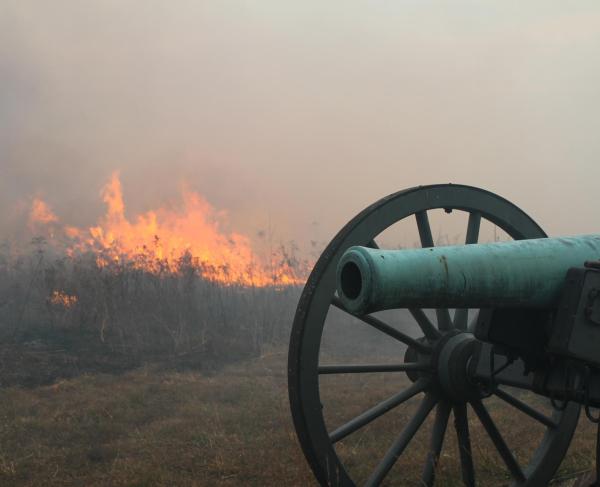America’s Magnificent Rivers
Hope you and your family are staying healthy and finding joy in the simple pleasures of summer, like ice cream, battlefield walks and spending time near water!
The heat of the summer, particularly this one, sends many of us looking for a body of water to help us cool off. The United States has some of the most magnificent rivers on the planet, but their contributions to its founding conflicts are often overlooked.
As you well know, rivers played an important role as transportation routes during the three seminal conflicts of America's first century: the Revolutionary War, War of 1812 and the American Civil War.
During the Revolutionary War, rivers were sometimes easier to travel than the rustic roads of our young country. The Hudson River, a 315-mile-long river originating in the Adirondack Mountains and named after explorer Henry Hudson, was seen as key to British general John Burgoyne's plan to isolate American patriots in New England from their counterparts in the Mid-Atlantic and Southern areas.
Today, the Hudson River is home to some 230 species of fish, plus state and national parks that run along its banks – including Saratoga National Historical Park!
The Niagara River, a 37-mile-long waterway connecting Lake Erie, where it originates, and Lake Ontario, marked the boundary between Canada and the State of New York in 1812. At the time, the Niagara River had low banks and was easily passable by boat. After the United States declared war on Great Britain in June, President James Madison planned three invasions of the major cities of Canada, one invasion being over the Niagara River.
During and prior to the Civil War, the Niagara River was the last stop on the Underground Railroad and an important point of crossing for persons escaping slavery in the South. The Suspension Bridge, built across the river in 1848, funneled thousands of people from slavery to freedom.
Today, the Niagara River is known internationally for its waterfalls and significant bird and fish populations. In October 2019, the Niagara River was designated by the United States as a Wetland of International importance under the Ramsar Convention, an international treaty signed in 1971 that encourages the designation of places containing illustrative, rare or unique wetlands, or wetlands that are significant for conserving biological diversity.
Iconic and awe-inspiring, the Mississippi River runs approximately 2,320 miles, originating in Minnesota and flowing into the Gulf of Mexico. During the American Civil War, the Mississippi River was key to both Union and Confederate strategies. In its early days, Union General Winfield Scott proposed what was known as "The Anaconda Plan" to block Southern ports and enable the Union to seize control of the Mississippi River. Union General Ulysses S. Grant and his troops, with their pivotal victory after the Siege of Vicksburg in July 1863, secured the Mississippi River for the Union.
Today, the Mississippi River is home to approximately 260 species of fish, 326 species of birds, 145 species of amphibians and reptiles, 38 species of mussels and 50 species of mammals.
In the heat of the summer, we encourage you to "Find your River" and explore both the history and nature of these special places.
Kathy Robertson
Deputy Director, Real Estate
American Battlefield Trust
P.S. We recently launched an effort to save 99 acres of Civil War battlefield land at Vicksburg, Raymond (part of the Vicksburg campaign), and Shiloh in Tennessee. The 33-acre tract at Vicksburg remains the largest unprotected parcel at this battlefield, and the 44 acres at the Raymond Battlefield are right against Fourteen Mile creek, which runs into the Ohio river.
P.P.S. BREAKING NEWS: We are celebrating that the “Great American Outdoors Act” has become law. This groundbreaking legislation to preserve and restore America’s public lands received significant bipartisan support in both houses of Congress and from a vast coalition of conservation and stewardship organizations, including the American Battlefield Trust, en route to its presidential signature. Learn more about the Act here.



